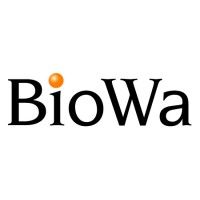预约演示
更新于:2025-05-07
IL-5Rα
更新于:2025-05-07
基本信息
别名 CD125、CDw125、IL-5 receptor subunit alpha + [9] |
简介 Cell surface receptor that plays an important role in the survival, differentiation, and chemotaxis of eosinophils (PubMed:9378992). Acts by forming a heterodimeric receptor with CSF2RB subunit and subsequently binding to interleukin-5 (PubMed:1495999, PubMed:22528658). In unstimulated conditions, interacts constitutively with JAK2. Heterodimeric receptor activation leads to JAK2 stimulation and subsequent activation of the JAK-STAT pathway (PubMed:9516124). |
关联
12
项与 IL-5Rα 相关的药物靶点 |
作用机制 IL-5Rα抑制剂 |
在研机构 |
原研机构 |
最高研发阶段批准上市 |
首次获批国家/地区 美国 |
首次获批日期2017-11-14 |
作用机制 IL-4Rα抑制剂 [+1] |
最高研发阶段批准上市 |
首次获批国家/地区 日本 |
首次获批日期1995-01-20 |
靶点 |
作用机制 IL-5Rα抑制剂 |
非在研适应症- |
最高研发阶段临床前 |
首次获批国家/地区- |
首次获批日期1800-01-20 |
118
项与 IL-5Rα 相关的临床试验NCT06862206
A Multicentre, Single Arm, Non-interventional, Prospective Study to Assess Demographic Characteristics and Patient Reported Outcomes in Patients With Severe Eosinophilic Asthma Treated With Benralizumab in China
The objective of this study is to collect empirical data that elucidates the clinical profile and therapeutic efficacy of benralizumab among the patients aged 12 years and above, with severe eosinophilic asthma. The study will focus on the early treatment response, treatment outcomes and the change in asthma control of benralizumab therapy in a real-world setting in China. This study will also describe the physician-reported reasons for discontinuation and switching of benralizumab therapy.
开始日期2025-05-31 |
申办/合作机构 |
NCT06512883
Phase 3, Open-label Trial to Evaluate Safety, Pharmacokinetics, and Efficacy of Benralizumab in Children With Eosinophilic Diseases (CLIPS)
The main purpose of study is to assess the safety, tolerability, and pharmacokinetic (PK) of benralizumab.
开始日期2025-04-17 |
申办/合作机构 |
NCT06750289
BRISOTE: A Multicentre, Randomised, Double-Blind, Parallel Group, Active-Controlled, Phase 3b Study to Evaluate the Efficacy and Safety of Benralizumab 30 mg SC in Eosinophilic Asthma Patients Uncontrolled on Medium-Dose Inhaled Corticosteroid Plus Long-acting β2-Agonist.
This study evaluates the efficacy and safety of benralizumab as an add-on therapy in uncontrolled eosinophilic asthma participants treated with medium-dose ICS-LABA compared to the conventional treatment step of escalation of inhaled therapy to high-dose ICS-LABA.
开始日期2025-03-28 |
申办/合作机构 |
100 项与 IL-5Rα 相关的临床结果
登录后查看更多信息
100 项与 IL-5Rα 相关的转化医学
登录后查看更多信息
0 项与 IL-5Rα 相关的专利(医药)
登录后查看更多信息
649
项与 IL-5Rα 相关的文献(医药)2025-12-31·Epigenetics
Differential methylation in blood pressure control genes is associated to essential hypertension in African Brazilian populations
Article
作者: Magalhães Borges, Vinícius ; Maschietto, Mariana ; Victorino Krepischi, Ana Cristina ; Alvizi, Lucas ; Avila Martins, Camila Cristina ; Nunes, Kelly ; Mingroni-Netto, Regina Célia ; Kimura, Lilian
2025-04-01·Journal of Allergy and Clinical Immunology
Targeting of the IL-5 pathway in severe asthma reduces mast cell progenitors
Article
作者: Mendez-Enriquez, Erika ; Bidovec-Stojkovic, Urska ; Alvarado-Vazquez, P. Abigail ; Kopac, Peter ; Simonson, Oscar E. ; Malinovschi, Andrei ; Škrgat, Sabina ; Pejler, Gunnar ; Alvarado-Vazquez, P Abigail ; Janson, Christer ; Hallgren, Jenny ; Dahlén, Sven-Erik ; Simonson, Oscar E ; Yasinska, Valentyna ; Korosec, Peter ; Salomonsson, Maya ; Koren, Ana
2025-04-01·Journal of Allergy and Clinical Immunology
Targeting alarmins in asthma: From bench to clinic
Review
作者: Boyce, Joshua A ; Akenroye, Ayobami ; Kita, Hirohito
83
项与 IL-5Rα 相关的新闻(医药)2025-04-29
·抗体圈
这篇文章于2022年发表在ImmuneNetw.,主要总结了自身免疫性疾病靶向免疫治疗最新进展。摘要: 在过去的几十年里,靶向炎性细胞因子、免疫细胞和细胞内激酶的生物药物和小分子抑制剂已成为治疗自身免疫性疾病的标准护理。抑制TNF、IL-6、IL-17和IL-23彻底改变了类风湿性关节炎、强直性脊柱炎和银屑病等自身免疫性疾病的治疗。使用抗CD20mAb的B细胞耗竭疗法在神经炎症性疾病患者中显示出有希望的结果,抑制B细胞存活因子被批准用于治疗系统性红斑狼疮。靶向Ag呈递细胞和T细胞上表达的共刺激分子也有望通过调节T细胞功能在自身免疫性疾病中具有治疗潜力。 最近,靶向JAK家族(负责多个受体信号转导)的小分子激酶抑制剂在自身免疫和血液疾病领域引起了极大的兴趣。然而,在治疗效果和安全性方面仍存在未满足的医疗需求。新兴疗法旨在使用先进的分子工程技术在不影响免疫功能的情况下诱导免疫耐受。【NO.1】背景介绍 自身免疫性疾病是以自身抗原炎症失调为特征的病理性疾病,影响3%-10%的普通人群。自身免疫性疾病的常规治疗方法抑制了一般免疫功能以调节不受控制的炎症。然而,这些治疗方法在异质性患者群体中并未完全成功,其疗效以牺牲副作用为代价,特别是感染风险增加,通常来自非选择性免疫抑制。为了克服传统疗法的局限性,目前的治疗方法旨在更选择性地抑制炎症信号,同时最大限度地减少对稳态免疫功能的破坏。 最近在了解疾病发病机制和新药制造技术方面取得的进展导致靶向免疫疗法广泛用于治疗自身免疫性疾病。此外,先进的分子工程技术催生了靶向可溶性介质或细胞表面标志物的重组蛋白治疗药物,如mAb和receptor-Ab融合蛋白。自1990年代首次批准靶向TNF的选择性蛋白质疗法用于类风湿性关节炎(RA)以来,靶向免疫疗法已成为治疗自身免疫性疾病的游戏规则改变者。根据全球药品市场报告,阿达木单抗多年来一直是全球最畅销的药物,其次是其他靶向免疫疗法,如pembrolizumab、ibrutinib和ustekinumab。 随着对疾病发病机制的了解迅速增加,许多靶向炎症信号通路的生物药物正在开发中,以治疗顽固性炎症性疾病。在成功引入生物疗法治疗自身免疫性疾病后,分子靶点已扩展到细胞内激酶。小分子激酶抑制剂阻断收敛信号在治疗效果和长期安全性方面具有重要意义。 本文总结了目前针对自身免疫性疾病发病机制中涉及的信号通路的治疗方法,并介绍了旨在诱导免疫耐受的新兴免疫疗法。由于靶向免疫疗法市场正在迅速增长,因此我们专注于已获得临床批准用于治疗自身免疫性疾病的药物。【NO.2】自身免疫性疾病中的炎症 炎症是生物体修复组织损伤并防止外来物质侵害的自然过程。然而,针对自身抗原的免疫反应失调会导致免疫耐受丧失和自身免疫性疾病的发展。自身免疫源于耐受性检查点的中枢和外周缺陷以及不耐受免疫细胞的激活。自身抗原可通过从免疫特权位点释放自身抗原、产生新自身抗原以及自身蛋白与外来物质的分子模拟来诱导。 自身免疫的临床表现多种多样,从存在自身抗体的无症状疾病到导致危及生命的器官损伤的暴发性自身免疫性疾病。自身免疫性疾病的发展可由遗传易感个体的环境因素触发。环境触发因素,包括压力、吸烟和感染,会诱导先天免疫的促炎功能,并促进适应性免疫的病理反应。 尽管自身免疫的传统概念是适应性免疫系统的失调,但越来越多的证据表明,先天免疫系统对自身免疫性疾病的发生和发展也至关重要。作为先天免疫的关键参与者,巨噬细胞和树突状细胞(DC)对于抗原呈递和促炎细胞因子(如TNF、IL-1β、IL-6、IL-23、B细胞激活因子(BAFF,也称为Blys或TNFSF13B)和增殖诱导配体(APRIL,也称为TNFSF13A)的产生至关重要。1型IFN与系统性红斑狼疮(SLE)及其相关疾病的发病机制密切相关,主要由浆细胞样DC(pDC)产生,浆细胞样DC是DC的一个特殊亚群。巨噬细胞/DC和T细胞/B细胞之间的相互作用进一步促进了自身免疫性炎症。 初始CD4+Th细胞根据细胞因子环境分化为不同的T细胞亚群。T细胞通过自身抗原识别、细胞因子产生和增强的细胞毒性,在自身免疫性疾病的发病机制中发挥关键作用。近几十年来,产生IL-17和FOXP3+Tregs的Th17细胞已被强调为自身免疫性疾病的治疗靶点。 自身反应性B细胞是适应性免疫的另一个主要组分,它产生病理性自身抗体,并通过Ag呈递和细胞因子产生激活T细胞。自身抗体的产生是各种自身免疫性疾病(包括RA和SLE)的标志。RA中的抗瓜氨酸肽抗体和SLE中的抗dsDNA抗体是导致临床表现和疾病活动度的代表性致病性自身抗体。由于B细胞在自身免疫中的重要作用,B细胞表面分子是各种自身免疫性疾病的治疗靶点。 来自活化免疫细胞的可溶性介质通过与它们的同源受体结合来转导炎症信号。一旦被炎性细胞因子结合,受体就会激活JAK家族,以诱导STAT的磷酸化、二聚化和核转位。STAT的基因转录促进细胞增殖和分化以及多种炎症介质的产生,进一步加剧自身免疫性炎症。 尽管每种自身免疫性疾病的病理生理机制不同,但几种常见的炎症途径可能是免疫治疗的治疗靶点。基于我们目前对自身免疫性炎症发病机制的理解,治疗自身免疫性疾病的关键治疗靶点如图1所示。表1、2、3列出了已批准用于自身免疫性疾病或正在临床开发的靶向免疫疗法,具体如下。本文重点介绍靶向免疫治疗在免疫介导的炎症性疾病领域的临床应用。图1.自身免疫性疾病发病机制中的关键治疗靶点表1.用于治疗自身免疫性疾病的细胞因子靶向疗法靶细胞因子结构药物临床应用正在调查中(IIb或III期)TNF-ɑsTNFR2-IgG1Fc依那西普RA、pJIA、AS、银屑病、PsA抗TNF单克隆抗体英夫利昔单抗RA、AS、银屑病、PsA、UC、CD超说明书使用:BD、结节病阿达木单抗RA、pJIA、AS、银屑病、PsA、UC、CD、化脓性毛突炎、葡萄膜炎超说明书使用:BD戈利木单抗RA、AS、PsA、UC赛妥珠单抗RA、AS、银屑病、PsA、CDIL-1IL-1R拮抗剂阿那白滞素RA、大写字母川崎病(NCT04656184)超说明书使用:AOSD、sJIA、痛风、复发性心包炎等IL-1R1-IgGFc利洛西普CAPS、DIRA、复发性心包炎超说明书使用:AOSD、痛风等IL-1β抗体抗卡纳单抗AOSD、sJIA、CAPS、TRAPS、HIDS/MKD、FMFCOVID19相关CRS(12)超说明书使用:痛风和许多其他IL-6(英语)IL-6单克隆抗体抗体西鲁尤单抗RA(13,14)*奥洛珠单抗RA(15)(NCT02760407,NCT02760433,NCT03120949)克拉扎奇珠单抗RA(NCT02015520)PsA(16)COVID19相关CRS(NCT04343989)西妥昔单抗CAR-T相关CRS(NCT04975555)IL-6R抗体抗体托珠单抗RA、sJIA、pJIA、SSc相关ILD、巨细胞动脉炎、CRSPMR(NCT02908217)超说明书使用:AOSD、Takayasu动脉炎NMOSD(17)COVID19肺炎(18,19)(NCT04409262)沙利尤单抗RA类COVID19相关CRS(20)(NCT04315298)沃巴利珠单抗RA(NCT02518620)IL-17(英语)IL-17单克隆抗体抗体依奇珠单抗银屑病、PsA、轴向SpA苏金单抗AS、银屑病、PsA系统性红斑狼疮(NCT04181762)轴向SpA(21)(NCT04156620,NCT04732117)Hiradenitissupprativa(NCT03713619,NCT03713632,NCT04179175)巨细胞动脉炎(NCT04930094)Grave眼病(NCT03713619)IL-17R抗体溴达利尤单抗牛皮癣轴向SpA(22)PsA(23)不锈钢(NCT03957681)IL17A/F抗体比莫珠单抗AS(NCT03928743)轴向SpA(NCT03928704,NCT04436640)银屑病(24,25)(NCT03598790,NCT03766685)PsA(NCT03895203、NCT03896581、NCT04009499NCT04109976)Hiradenitissuppruativa(NCT04242446,NCT04242498,NCT04901195)IL-23抗p40mAb抗体乌司奴单抗银屑病、PsA、UC、CD特发性炎性肌炎(NCT03981744)高安动脉炎(NCT04882072)抗p19mAb抗体古塞利尤单抗银屑病,PsAUC(NCT04033445)CD(NCT03466411,NCT04397263)瑞沙珠单抗牛皮癣PsA(26,27)UC(NCT03398135,NCT03398148)CD(NCT03104413、NCT03105102、NCT03105128NCT04524611)替尔拉奇珠单抗牛皮癣PsA(NCT03552276、NCT04314544、NCT04314531NCT04991116)米利珠单抗银屑病(NCT03482011、NCT03535194NCT03556202)UC(NCT03518086、NCT03519945NCT03524092)CD(NCT03926130,NCT04232553)1型IFN抗IFNR1单克隆抗体Anifrolumab系统性红斑狼疮备注:该表包括具有一种或多种已批准自身免疫性疾病适应症的药物。该适应症仅涵盖自身免疫性疾病领域。pJIA,多关节幼年特发性关节炎;UC,溃疡性结肠炎;CD,克罗恩病;BD,白塞病;sJIA,系统性幼年特发性关节炎;DIRA,IL-1受体拮抗剂缺乏;TRAPS,TNF受体相关周期性综合征;HIDS/MKD、高免疫球蛋白D综合征/甲羟戊酸激酶缺乏症;FMF,家族性地中海热;CRS,细胞因子释放综合征;CAR-T,嵌合Ag受体-T细胞;SSc相关ILD、系统性硬化症相关间质性肺病、PMR、风湿性多肌痛、NMOSD、视神经脊髓炎谱系疾病;中轴型SpA,中轴型脊柱关节炎。*尽管III期临床试验取得了积极结果,但由于安全性问题,FDA并未推荐将sirukumab用于治疗RA。表2.用于治疗自身免疫性疾病的细胞靶向疗法靶细胞结构药物临床应用正在调查中(IIb或III期)B细胞抗CD20mAb抗体利妥昔单抗RA类寻常型天疱疮(28)GPA、MPA超说明书使用:MS、免疫性血小板减少症奥瑞珠单抗女士奥法木单抗女士乌布利妥昔单抗MS(NCT03277261、NCT03277248NCT04130997)抗CD19mAb抗体因比利珠单抗NMOSDIgG4RD(NCT04540497)重症肌无力(NCT04524273)抗BAFF单克隆抗体贝利尤单抗系统性红斑狼疮抗BAFF-R单克隆抗体伊那单抗系统性红斑狼疮(NCT05126277)pSS(29)T细胞CTLA4-IgG1Fc阿巴西普RA,pJIApSS(NCT02067910,NCT02915159)PsA(30)特发性炎性肌炎(NCT02971683)GPA(NCT02108860)CD40mAb抗体伊斯卡利单抗pSS(NCT03905525)备注:该表包括已批准用于自身免疫性疾病或基于II期试验的积极结果正在临床开发的药物。GPA,肉芽肿性多血管炎;MPA,显微镜下多血管炎;NMOSD,视神经脊髓炎谱系疾病;IgG4RD,免疫球蛋白G4相关疾病;pJIA,多关节幼年特发性关节炎。表3.用于治疗自身免疫性疾病的激酶靶向疗法靶标激酶结构药物临床应用正在调查中(IIb或III期)杰克JAK1/3抑制剂托法替布RA类贾(31)(NCT01500551,NCT03000439)PsAAS(32))UC(英语)JAK1/2抑制剂巴瑞替尼RA类系统性红斑狼疮(NCT03843125,NCT03616912,NCT03616964)JIA(NCT03773965,NCT03773978)sJIA(NCT04088396)特应性皮炎(33,34)葡萄膜炎(NCT04088409)JAK1选择性抑制剂乌帕替尼RA类CD(NCT03345823、NCT03345836NCT03345849)PsA加州大学(35)(NCT03006068,NCT03653026)轴向SpA(NCT04169373)特应性皮炎(36,37)(NCT03661138,NCT04195698)高安动脉炎(NCT04161898)巨细胞动脉炎(NCT03725202)非戈替尼RA(由EMA和日本提供)统一(38)(NCT02914535)CD(NCT02914561,NCT02914600)TYKTYK2选择性抑制剂Deucravacitinib银屑病(NCT03624127,NCT03611751)PsA(NCT04908189,NCT04908202)BTK公司BTK抑制剂Evobrutinib(依布替尼)MS(NCT04338022,NCT04338061)托布替尼MS(NCT04410978、NCT04410991、NCT04411641NCT04458051)重症肌无力(NCT05132569)非布替尼MS(NCT04544449、NCT04586010NCT04586023)利扎布替尼寻常型天疱疮(NCT03762265)免疫性血小板减少症(NCT04562766)备注:该表包括已批准用于自身免疫性疾病或基于II期试验的积极结果正在临床开发的药物。UC,溃疡性结肠炎;sJIA,系统性幼年特发性关节炎;CD,克罗恩病;中轴型SpA,中轴型脊柱关节炎。【NO.3】细胞因子靶向治疗肿瘤坏死因子(TNF) TNF是一种主要由髓系细胞和活化T细胞产生的促炎细胞因子。RA滑膜中TNF表达的增加和TNF转基因小鼠中关节炎的发展表明TNF在慢性炎症中的致病作用。抗TNF治疗的成功彻底改变了RA患者的治疗策略。自1998年英夫利昔单抗和依那西普首次获批以来,已有4种单克隆抗体(英夫利昔单抗、阿达木单抗、戈利木单抗和赛妥珠单抗)和1种受体-Fc融合蛋白(依那西普)获批,目前可用于治疗慢性免疫介导的疾病,包括RA、幼年特发性关节炎(JIA)、强直性脊柱炎(AS)、银屑病和银屑病关节炎(PsA)。这种mAb也适用于治疗炎症性肠病和非感染性葡萄膜炎。 尽管TNF具有促炎作用,但它是一种多效性细胞因子,依赖于TNF受体(TNFR)的结合。TNFR1在几乎所有有核细胞上组成性表达,主要负责TNF的炎症功能,而TNFR2仅在特定细胞类型上表达,例如髓源性抑制细胞、Treg细胞和单核细胞,与TNF的调节功能相关。源自TNFR1和TNFR2的不同信号转导通路已在其他地方进行了综述。目前可用的抗TNF疗法同时抑制TNFR1和TNFR2。由于TNF的调节方面,TNF阻断可能反常地诱导Th1/Th17细胞扩增和IFN反应失调,这可以解释抗TNF治疗期间治疗失败、自身抗体生成和反常银屑病的原因。因此,正在研究抑制TNFR1和增强TNFR2的更多选择性治疗。IL-1 IL-1α和IL-1β是IL-1家族的成员,是促炎细胞因子,与先天免疫反应密切相关。尽管IL-1α和IL-1β通过与IL-1受体1(IL-1R1)结合而具有共享生物学功能,但IL-1α与IL-1β的几个特征是不同的。在间充质细胞中组成型表达的pro-IL-1α具有生物活性,而巨噬细胞产生的pro-IL-1β需要被caspase-1切割才能成为活性IL-1β。pro-IL-1β的Caspase-1依赖性裂解是通过激活包含核苷酸结合结构域成员和包含亮氨酸富集重复序列的[NLR]蛋白家族(例如NLR家族含pyrin结构域的[NLRP]1、NLRP3、NLR家族CARD结构域4)或包含PYRIN-HIN-200结构域的蛋白家族成员(例如,在黑色素瘤2中不存在)的炎性小体激活来介导的)。此外,与IL-1β相反,IL-1α在体循环中未检测到,这表明IL-1α在自身免疫性疾病中的致病作用是局部的,而不是全身的。目前,IL-1β被认为比IL-1α与多种风湿性疾病更密切相关,包括全身性JIA、成人发病斯蒂尔病(AOSD)和痛风,以及与遗传性自身炎症性疾病的相关性,例如冷热蛋白相关周期性综合征(CAPS)和家族性地中海热。 被IL-1α或IL-1β占据后,IL-1R1与IL-1R3形成异源三聚体复合体,以募集髓样分化初级反应基因88(MYD88),从而触发随后的激酶级联反应(IL-1R相关激酶[IRAK]、IκB激酶、IκB和NF-κB),从而促进促炎状态。IL-1的这种炎症活性受来自同一IL-1家族的天然IL-1R拮抗剂(IL-1Ra)的调节。IL-1Ra占据IL-1R1导致构象变化,阻碍异源三聚体复合物与IL-1R3的形成,从而阻碍IL-1介导的炎症过程。 目前,已有3种蛋白质疗法被批准用于抗IL-1疗法:canakinumab,一种抗IL-1βmAb;anakinra,一种重组IL-1受体拮抗剂;和rilonacept,一种IL-1R1-Fc融合蛋白。根据它们的分子结构,所有3种药物都阻断IL-1β,阿那白滞素和利洛西普也抑制IL-1α。作为一种抑制IL-1信号转导的新治疗方法,口服NLRP3抑制剂,包括达潘舒腈(OLT177),正在研究中。 在早期临床开发中,阿那白滞素被测试为RA的治疗方法。尽管阿那白滞素在RA患者中的治疗效果已得到证实,但由于其成本效益低,因此不推荐将阿那白滞素作为一线生物疗法。抗IL-1疗法更广泛地用于自身炎症性疾病,如全身性JIA、AOSD和CAPS。其他具有高炎症负荷的疾病,例如痛风和复发性心包炎,也可通过IL-1靶向治疗进行控制。由于IL-1在炎症性疾病中的广泛作用,IL-1阻断有望在治疗顽固性自身免疫性疾病(包括SLE和系统性硬化症)以及控制过度的促炎反应(如细胞因子释放综合征和巨噬细胞激活综合征)方面提供临床益处。IL-6 IL-6是一种多效性细胞因子,由各种细胞类型在感染、炎症和恶性肿瘤的情况下产生。IL-6最初被鉴定为T细胞分泌的“B细胞分化因子”或“B细胞刺激因子”。尽管抗IL-6疗法在B细胞成熟中起着关键作用,但其对多发性骨髓瘤患者的治疗效果不佳。然而,托珠单抗(第一种抗IL-6R阻断单克隆抗体)的IL-6靶向治疗被证明在RA中具有显着的临床益处,甚至在疗效上优于阿达木单抗。托珠单抗目前被批准用于治疗RA、JIA、AOSD、巨细胞动脉炎和细胞因子释放综合征,因为它能够调节全身性过度炎症。最近,已研究抗IL-6疗法在SLE、视神经脊髓炎和系统性硬化症中的治疗应用。 IL-6在生理和病理条件下具有多种生物学功能。在生理状态下,IL-6负责巨噬细胞分化为M2状态,通过成骨细胞上RANK配体表达的增加进行破骨细胞生成,以及通过肝脏中的JAK-STAT通路进行急性期反应。在病理(炎症)条件下,IL-6通过调节FOXP3、RORC和IL-23R表达,关键参与Th17分化。IL-6对滤泡辅助性T细胞的发育和B细胞的成熟也很重要。 IL-6信号转导通过IL-6R和糖蛋白130(gp130)的复合物转导。gp130二聚化依次激活多个信号转导通路,包括JAK-STAT、MAPK、PI3K和YES相关蛋白1,这些蛋白转位到胞核并控制与细胞生长、增殖和炎症相关的基因转录。为了干扰IL-6信号通路,抗IL6疗法可以靶向IL-6、IL-6R、gp130、JAK和STAT3。然而,对副作用的担忧限制了gp130和STAT3作为治疗靶点的潜力。因此,抗IL6mAb、抗IL-6RmAb和JAK抑制剂已被用于阻断IL-6信号转导,并且使用可溶性gp130抑制IL-6/IL-6R复合体的可能性正在研究中。IL-17 IL-17A,通常称为IL-17,是CD4+T细胞Th17亚群的标志性细胞因子,但它也由CD8+T细胞(Tc17)、γδT细胞、自然杀伤T细胞、第3组先天性淋巴细胞和中性粒细胞产生。在生理状态下,Th17细胞通过募集中性粒细胞、宿主对细菌和真菌的防御以及皮肤和粘膜部位的组织修复来促进先天免疫。在病理条件下,IL-17A与TNF和其他炎性趋化因子协同作用,促进自身免疫。炎症性关节炎和神经炎症的动物模型表明,Th17细胞而不是Th1细胞在这些疾病的发展中起主要作用。 Th17细胞在IL-1β、IL-6和TGF-β存在下,通过抑制FOXP3并激活STAT3和RORC来源于初始CD4+初始T细胞。随后,IL-23稳定致病性Th17细胞的增殖和存活。与IL-17A结合后,IL-17R亚基A(IL-17RA)和亚基C(IL-17RC)的称为SEF/IL-17R的独特胞质结构域募集接头蛋白Act1,从而触发TNF受体相关因子(TRAF)6的泛素化,随后激活NF-κB、MAPK和激活蛋白1(AP1)通路和C/EBP转录因子。 来自动物和人类研究的越来越多的证据表明,IL-23/IL-17轴是多种自身免疫性疾病(如AS、PsA和RA)的极好治疗靶标。目前的抗IL-17疗法包括IL-17A(苏金单抗和依奇珠单抗)和IL-17RA(brodalumab)的mAb。正如预期的那样,抗IL-17疗法在银屑病、PsA和AS中产生了显著的反应。出乎意料的是,这种方法在RA(一种Th17依赖性疾病)患者中未能显示出显着的临床疗效。这种不令人满意的结果可以通过疾病本身的异质性或IL-17A的不同致病作用来解释,具体取决于RA分期(例如早期与晚期)。IL-23 IL-23是一种由DC和活化的巨噬细胞分泌的促炎细胞因子。作为IL-12家族的一员,IL-23是一种异二聚体,由IL-12共有的p40亚基(IL-12/IL-23p40)和IL-23特有的p19亚基(IL-23p19)组成。尽管IL-12和IL-23共享一个结构亚基,但IL-23更重要、更广泛地参与自身免疫性疾病的发病机制。最重要的是,IL-23通过维持Th17特征基因、抑制抑制因子、上调IL-23R表达和诱导效应基因来稳定Th17细胞的致病特征。它还作为自分泌因子促进DC和巨噬细胞的促炎功能。 IL-23与由IL-12Rβ1(与IL-12/IL-23p40结合)和IL-23R(与IL-23p19结合)组成的受体复合体相互作用,它们分别与酪氨酸激酶(TYK)2和JAK2结合。TYK2和JAK2的激活导致STAT的磷酸化和核转位,主要是STAT3。通过靶向抑制IL-12/IL-23p40或IL-23p19,可以阻断IL-23信号传导。作为一种抗IL-12/IL-23p40mAb,乌司奴单抗可阻断IL-12和IL-23,而抗IL-23p19mAb(guselkumab、tildrakizumab、risankizumab和mirikizumab)仅抑制IL-23。 与抗IL-17治疗类似,IL-23抑制可有效治疗银屑病和PsA。然而,与抗IL17治疗相比,靶向p40和p19亚基的mAb均未能改善AS的临床病程。尽管IL-23在AS的临床前模型中具有明显的致病作用,但这种意外结果表明,IL-23在人类自身免疫性疾病的组织和时间依赖性环境中发挥着不同的作用。在克罗恩病中,乌司奴单抗成功改善了临床结局,抗IL-23p19mAb的临床试验正在进行中(表1)。1型IFN 1型IFN,包括IFN-α、IFN-β、IFN-ε、IFN-κ和IFN-ω,最初被鉴定为可溶性抗病毒因子。随后的研究表明,IFN-α在自身免疫性疾病,尤其是SLE的发病机制中起着至关重要的作用。SLE患者的临床数据显示1型IFN特征的表达显著增加。重组IFN-α治疗后SLE样综合征的发展也表明1型IFN在自身免疫性疾病中的病理作用。 虽然大多数有核细胞可以产生1型IFN,但主要的细胞来源是pDC。含核酸的细胞外刺激,例如分别与抗RNA和DNA自身抗体复合的RNA和DNA,与pDC中的Toll样受体7(TLR7)和TLR9相互作用,以募集MYD88并激活IRAK和TRAF,从而导致IFN调节家族(IRF)7易位并导致IFN-α转录)。1型IFN与由IFNAR1和IFNAR2组成的IFN-α/β受体(IFNAR)结合。与1型IFN结合后,IFNAR1和IFNAR2分别激活JAK1和TYK2,从而导致STAT1和STAT2磷酸化和核转位。在胞核中,STAT1/STAT2与IRF9一起诱导IFN刺激基因的表达。在SLE中,IFN-α通过刺激髓系DC、Th1细胞和B细胞以及抑制Treg来促进促炎反应。 IFN-α在SLE中的病理生理学意义导致了1型IFN靶向免疫治疗的发展。在SLE中测试了Rontalizumab和sifalimumab中和干扰素α的单克隆抗体,但未能控制疾病活动。尽管IFN-α以外的IFN的作用尚不清楚,但仅抑制IFN-α而保持IFN-β和IFN-κ活性可能解释了SLE治疗效果不足的原因。最近,anifrolumab是一种靶向IFNAR1以阻断所有1型IFN生物学功能的人单克隆抗体,已被批准用于中度至重度SLE。Anifrolumab在减少疾病活动、口服皮质类固醇使用和年化发作方面显示出一致的临床益处。然而,狼疮性肾炎和神经精神性狼疮患者被排除在临床试验之外。 几种阻断1型IFN的新治疗方法正在研究中。为了减少1型IFN的产生,药物靶向pDC和信号转导分子,如TLR、MyD88和IRAK4。激酶抑制剂也正在临床开发中,用于治疗各种自身免疫性疾病,具体取决于它们抑制IFNAR下游信号通路的能力。【NO.4】细胞靶向治疗B细胞 随着我们对B细胞功能的理解不断扩大,B细胞被认为是自身免疫性疾病的积极参与者。有趣的是,B细胞耗竭疗法在RA和多发性硬化症(MS)中的成功突出了B细胞在自身免疫中的病理意义。除了在Ab产生中发挥作用外,B细胞还通过Ag呈递、三级淋巴组织的形成和细胞因子(如IL-6、TNF、IFN-γ和GM-CSF)的产生积极参与自身免疫。B细胞的Ab非依赖性功能解释了RA和MS中B细胞耗竭疗法的治疗效果,尽管没有自身抗体减少。 B细胞在骨髓中产生,并在外周组织中依次分化为Ag特异性B细胞。B细胞分化通过体细胞超突变和免疫球蛋白的类别转换重组,伴随着B细胞表面标志物的变化,继续增加对Ag的亲和力。CD20仅在从前B细胞到记忆B细胞的B细胞谱系中表达,但不在浆细胞中表达(图1)。在过去的几十年里,抗CD20疗法一直是B细胞耗竭的主要工具。利妥昔单抗是一种嵌合抗CD20mAb,可将CD20再分布到脂筏中,然后激活补体依赖性细胞毒性和Ab依赖性细胞毒性(ADCC)。利妥昔单抗有效消除CD20+B细胞会耗尽分泌Ab的浆母细胞的细胞来源,并阻止不依赖Ab的B细胞功能,从而减轻自身免疫性炎症。随着利妥昔单抗在RA和MS中的临床成功,已经开发了具有不同结合表位、不同给药途径和先进治疗效果的多种抗CD20疗法。Ocrelizumab和ofatumumab是人源化抗CD20mAb,已被批准用于复发性MS,其他抗CD20mAbobinutuzumab和ublituximab的临床试验正在进行中(表2)。 但是,利妥昔单抗在治疗SLE方面并未完全成功,SLE是刻板的B细胞介导的疾病之一。除了SLE患者的异质性外,利妥昔单抗治疗失败还可能由于存在自身反应性CD20−(但CD19+)长寿命浆细胞、外周血和组织中B细胞不完全耗竭或B细胞重建过程中的疾病发作。为了广泛抑制对抗CD20治疗耐药的B细胞,B细胞耗竭疗法靶向CD19,CD19在CD20+B细胞以及CD20-浆母细胞和一些浆细胞上表达。人源化抗CD19mAbinebilizumab被批准用于治疗视神经脊髓炎谱系疾病,并且正在进行临床试验以治疗其他炎症性神经系统疾病(表2)。 抑制B细胞的另一种方法是阻断B细胞存活因子,特别是BAFF和APRIL。BAFF与其3种不同受体连接后,与B细胞成熟和存活密切相关:1)BAFF受体(BAFF-R,称为TNFRSF13C),在除浆细胞外的大多数B细胞亚群上表达;2)跨膜激活剂、钙调节剂和亲环蛋白配体相互作用剂(TACI;称为TNFRSF13B),在边缘区B细胞、记忆B细胞和浆细胞上表达;3)B细胞成熟Ag(BCMA;称为TNFRSF17)在浆母细胞和浆细胞上表达。与BAFF-R不同,TACI和BCMA也与APRIL结合,这对Ab类别转换和浆细胞存活很重要。 鉴于B细胞成熟、增殖和存活的重要作用,BAFF/APRIL系统被认为是SLE及其相关自身免疫性疾病中一个有前途的治疗靶点。贝利尤单抗是一种人源化抗BAFFmAb,是FDA批准用于SLE的第一个靶向免疫疗法。然而,贝利尤单抗并不总是对所有SLE患者具有普遍的治疗益处。Ianalumab是一种抗BAFF-R的单克隆抗体,在原发性干燥综合征(pSS)患者的II期试验中显示出有希望的结果。作为B细胞耗竭疗法,ianalumab有2种作用模式:通过增强ADCC裂解B细胞和阻断BAFF信号传导。Telitacicept是一种TACI-Ig融合蛋白,基于其对BAFF/APRIL系统的抑制作用,也正在临床开发中。T细胞 作为适应性免疫的关键调节因子,T细胞在自身免疫的发生和发展中起着关键作用。T细胞效应器功能需要TCR的Ag识别和共刺激受体的额外参与。因此,已经研究了这些共刺激分子的调节用于自身免疫性疾病和恶性肿瘤的T细胞靶向治疗。 CD28信号转导是通过激活MAPK、AKT和NF-κB通路进行T细胞激活和分化的一种众所周知的共刺激通路。CD4+T细胞上表达的CD28与Ag呈递细胞上的CD80或CD86结合,CTLA-4作为CD28的抑制性对应物共享。基于CD28和CTLA-4的反调节,开发了一种由CTLA4胞外结构域和IgGFc区(CTLA4-Ig)组成的融合蛋白,通过占据CD80和CD86来抑制CD28信号传导。第一个CTLA4-Ig阿巴西普被批准用于治疗RA和JIA,已证实对控制炎症性关节炎有效。随后,另一种与CD80和CD86结合改善的CTLA4-Igs(包括belatacept和MEDI5256)已被研究用于临床应用。尽管贝拉西普于2011年被批准用于肾移植受者,但贝拉西普在基于钙调磷酸酶抑制剂的常规方案之外的额外临床益处存在争议。 CD40通路是T细胞效应器功能的主要激活信号。CD40L与CD40连接后,CD80和CD86表达上调。当活化T细胞上的CD40L与靶细胞上的CD40结合时,多个激酶级联反应会激活转录因子,如NF-κB和AP1,以诱导细胞存活、增殖和分化。CD40信号转导对于参与T细胞依赖性Ab反应、生发中心形成和记忆B细胞分化的B细胞-T细胞相互作用尤为重要。由于其在B细胞功能中的关键作用,靶向CD40信号转导的治疗潜力已在临床前和临床研究中得到研究。iscalimab(一种人源化抗CD40mAb)最近的II期试验显示pSS患者的临床改善,随后的III期试验正在进行中(表2)。 靶向其他共刺激信号转导的免疫疗法,如诱导型T细胞共刺激因子(ICOS)和OX40通路,也正在开发中,以抑制自身免疫性疾病中的T细胞效应功能。作为在活化的CD4+T细胞上表达的共刺激分子,ICOS和OX40参与T细胞的存活、分化和活化。【NO.5】激酶靶向治疗 如前所述,将可溶性炎症介质与其同源受体结合通过激活细胞内激酶(通常是JAK家族)来转导信号。JAK家族由JAK1、JAK2、JAK3和TYK2组成,与细胞因子受体(包括IL-2R、IL-4R、IL-5R、IL-6R、IL-13R和1型IFN)、生长激素和促红细胞生成素有关。JAK家族的激活导致STAT的磷酸化、二聚化和核转化。在细胞核中,STAT有助于参与细胞分化、增殖和存活、细胞因子产生和血管生成的基因转录。 由于JAK在造血中的关键作用,JAK抑制剂首次被评估用于治疗血液病,尤其是骨髓增生性肿瘤。自ruxolitinib(一种JAK1和JAK2抑制剂)于2011年首次被批准用于治疗骨髓纤维化以来,许多激酶抑制剂已被批准或研究用于治疗血液系统恶性肿瘤和炎症性疾病。几种JAK抑制剂已根据其经证实的临床疗效被批准用于RA、PsA和溃疡性结肠炎。每种JAK抑制剂对JAK的选择性不同,但尚未证明JAK抑制剂之间的治疗效果存在差异。Tofacitinib和baricitinib分别主要靶向JAK1/3和JAK1/2。Upadacitinib和filgotinib是第二代JAK抑制剂,可选择性抑制JAK1。 与上述调节细胞外间隙细胞激活信号的免疫疗法相比,JAK抑制剂靶向细胞内间隙的信号通路。JAK靶向治疗会抑制来自多个细胞因子受体的收敛信号,并破坏反馈回路。因此,即使部分阻断选定的激酶也可以有效地下调多种炎症信号通路,减轻自身免疫性炎症。应该注意的是,在一项头对头的随机对照试验中,巴瑞替尼显示出比抗TNFmAb阿达木单抗更好的临床反应。 除JAK抑制剂外,选择性TYK2抑制剂deucravacitinib正在等待临床批准,作为银屑病的首个口服靶向治疗。TYK2介导源自IL-12、IL-23和1型IFN的细胞内炎症信号。根据对PsA、炎症性肠病和SLE患者的机制见解,目前正在研究deucravacitinib在PsA、炎症性肠病和SLE患者中的治疗潜力(表3)。 布鲁顿酪氨酸激酶(BTK)抑制剂也有望通过调节B细胞功能来改善自身免疫性炎症。目前正在研究BTK抑制剂在各种自身免疫性疾病中的应用,包括RA、MS、pSS和SLE。最近一些使用BTK抑制剂的II期试验在复发性MS患者中显示出有希望的结果。 激酶抑制的未来方向是基于先进的分子技术开发更具选择性的抑制剂,具有最小的脱靶效应和更高的器官特异性。此外,应广泛研究由不受调节的细胞行为引起的除改善炎症以外的靶向效应。最近的证据表明,接受托法替布治疗的患者面临心脏事件、恶性肿瘤、血栓形成和死亡的风险增加,FDA已决定修改JAK抑制剂的黑框警告。自身免疫性疾病的慢性病程引发了对长期药物使用的安全性担忧,这会严重影响患者和医生的药物选择。【NO.6】新兴免疫疗法 随着对自身免疫性疾病免疫发病机制的更好理解和生物技术的不断进步,许多具有新治疗靶点和先进疗效的药物不断被开发出来,显示出有希望的疗效。尽管如此,仍然存在未满足的医疗需求,例如异质性治疗效果和免疫抑制引起的不良事件。为了克服当前治疗的局限性,炎症性疾病的治疗方法已经多样化和个体化。在这里,我们简要介绍了由先进分子工程技术实现的靶向免疫治疗的新视角。嵌合抗原受体(CAR)T细胞疗法 CART细胞疗法的基本概念是施用含有基因工程TCR的自体T细胞,以捕获肿瘤特异性Ag并通过增加细胞毒性来消除肿瘤细胞。在弥漫性大B细胞淋巴瘤患者治疗成功后,CD19CART细胞疗法被批准用于治疗B细胞淋巴瘤和急性淋巴细胞白血病。 CAR是由胞外Ag识别结构域、跨膜结构域和胞内T细胞激活结构域组成的工程化受体。细胞外结构域,也称为单链Fv,被设计为单克隆抗体的可变重链和轻链。细胞外结构域对Ag的识别会激活细胞内结构域上基于免疫受体酪氨酸的激活基序,导致细胞因子的产生和靶细胞的裂解。为了提高治疗效果,细胞内结构域由一个激活结构域CD3ζ和一个共刺激结构域(如CD28)组成。 尽管CART细胞最初被引入肿瘤学领域,但它们消除病理细胞的治疗潜力延伸到自身免疫性炎症性疾病的治疗。最近,Mougiakakos等人报道了自体CD19CART细胞疗法在常规治疗难治性SLE患者中的快速临床缓解。在该患者中,单次给药后7周内可在外周血中检测到输注的CD19CART细胞,抗dsDNA抗体快速且持续下降。这是一个有希望的结果,因为目前抗CD20mAb的B细胞耗竭需要定期注射并注意免疫原性以维持初始治疗效果。 随着工程T细胞疗法的发展,嵌合自身抗原受体(CAAR)T细胞和CARTreg疗法作为自身免疫性疾病的新型治疗策略而受到关注。CAART细胞的胞外结构域表达一种自身抗原,该抗原可与Ag特异性自身反应性B细胞和T细胞相互作用。CAART细胞疗法可能对具有已知自身抗原的自身免疫性疾病有效。CARTreg细胞的设计也期望产生Ag特异性免疫调节反应,而输注多克隆Treg细胞无法充分实现这种反应。然而,这种针对自身免疫性疾病的工程化T细胞疗法尚未得到广泛研究。此外,尽管工程化T细胞疗法具有假设的治疗效果,但细胞因子释放综合征和神经毒性可能会限制对细胞疗法在自身免疫性疾病中使用的热情,尤其是在高炎症微环境中。低剂量IL-2疗法 IL-2是Treg细胞分化、激活和存活的关键细胞因子,主要由活化的CD4+T细胞产生。Treg定义为CD4+FOXP3+CD25+CD127低表达,通过分泌抗炎细胞因子(IL-10、肿瘤生长因子-β和IL-35)、DC诱导免疫抑制酶(吲哚胺2,3-双加氧酶)、效应T细胞和NK细胞失活以及对CD8+T细胞和NK细胞的直接细胞毒性。Treg细胞缺陷和/或功能障碍常见于RA、SLE、pSS和AS等各种自身免疫性疾病。 除了激活Treg细胞外,IL-2还诱导效应T细胞的存活和增殖,并抑制Th17细胞分化。基于其对常规T细胞的刺激作用,大剂量IL-2疗法首次被批准用于转移性肾细胞癌和转移性黑色素瘤。然而,后来的研究表明,IL-2的主要作用是通过在Treg细胞上表达的高亲和力IL-2R介导的。IL-2R以单体、二聚体和三聚体变体表达,三聚体IL-2R的亲和力高于单体和二聚体形式。由于Treg细胞在高水平上组成性表达三聚体IL-2R,因此Treg细胞对IL-2比效应记忆CD4+T细胞高度敏感。因此,已在自身免疫性疾病中评估了低剂量IL-2疗法(0.3至300万国际单位/天),预计它将通过Treg刺激诱导免疫耐受,同时对效应T细胞的影响最小。 在自身免疫性疾病(包括SLE、PsA和丙型肝炎病毒诱导的冷球蛋白血症血管炎)患者中,低剂量IL-2疗法改善了临床结果,这与Treg细胞的增加一致。在临床试验中,低剂量IL-2具有可耐受的安全性,并且与感染风险增加无关。此外,在小鼠中,低剂量IL-2长期治疗不会损害对疫苗接种、感染和癌症的免疫反应。 良好的临床试验结果导致开发了氨基酸序列改变的工程化IL-2蛋白(IL-2突变蛋白),以提高选择性并减少不良反应。IL-2与生物疗法(如TNF和IL-6抑制)的组合也正在研究中。免疫耐受诱导 在不破坏免疫系统其他部分的情况下诱导对自身抗原的免疫耐受是治疗自身免疫性疾病的理想方法。在这方面,可以诱导Ag特异性免疫耐受的口服耐受性已经研究了一个多世纪。肠道相关淋巴组织(GALT)是最大的免疫器官,可维持对大量食物和共生微生物的耐受性。鉴于GALT在肠道稳态和全身调节中的作用,饲喂Ags对系统性自身免疫性疾病的耐受性影响已在临床前和临床试验中得到广泛研究。在动物模型中,发现口服耐受诱导可有效预防甚至治疗各种炎症性疾病,包括炎症性关节炎、实验性自身免疫性脑炎、糖尿病和葡萄膜炎。根据Ag的剂量,低剂量的Ag会促进分泌IL-4、IL-10和TGF-β的Treg细胞的产生,而高剂量的Ag会促进特定T细胞的克隆缺失或无反应。然而,这种免疫耐受机制并不排斥,可以重叠。 口服耐受诱导的早期试点试验和II期试验也显示出对RA、MS和葡萄膜炎患者有希望的结果,而没有治疗相关的毒性。然而,在RA和MS患者中进行Ag喂养的III期试验显示治疗效果不佳。尽管Ag喂养具有实验效果和可接受的安全性,但仍需要解决未解决的问题才能成功诱导免疫耐受:(1)Ag喂养方案(Ag的剂量和类型、粘膜佐剂的使用和给药频率);(2)与常规免疫抑制药物联合治疗;(3)反映口服耐受性发展有效性的生物和免疫标志物;4)选择适合诱导口服耐受的患者(年龄、疾病发作和脱敏史)。 抗原特异性耐受性的另一种方法是递送自身抗原的耐耐受性疫苗。致耐受性疫苗已成功诱导Ag特异性Treg细胞,并在自身免疫性疾病的动物模型中促进自身反应性T细胞无反应和细胞凋亡。已经研究了几种耐受性原疫苗平台,包括基于蛋白质/肽、纳米颗粒、细胞和DNA/RNA的疫苗,以增强MS临床前和临床研究中的免疫原性。尽管使用肽疫苗的III期试验未能显示出临床益处,但仍在使用MS患者的多种疫苗平台对耐受性方法进行研究。 最近,Krienke等人报道了在髓鞘少突胶质细胞糖蛋白(MOG35-55)诱导的实验性自身免疫性脑脊髓炎小鼠模型中,使用基于非炎性mRNA的疫苗成功诱导免疫耐受。尽管双链RNA分子在细胞外环境中具有固有的促炎性,但用1-甲基假尿苷(m1Ψ)取代尿苷会降低其促炎性质。MOG35-55编码m1Ψ修饰的单链mRNA疫苗可预防小鼠疾病的发展和进展。致耐受性疫苗诱导MOG35-55特异性FOXP3+Treg细胞并抑制MOG33-35特异性Th1和Th17细胞。PD1和CTLA4等抑制分子在Ag特异性细胞上的表达上调,疫苗的保护作用被PD1和CTLA-4靶向检查点抑制剂消除。 尽管如此,耐受性疫苗的开发具有挑战性,因为哪些自身抗原对自身免疫性疾病具有特异性尚无定论且存在争议,并且多种自身抗原可能涉及大多数自身免疫性疾病。【NO.7】结论 过去几十年来靶向免疫治疗的进步彻底改变了自身免疫性疾病患者的治疗和临床结果。目前的靶向免疫疗法通过阻断炎性细胞因子、细胞表面分子和细胞内激酶来抑制主要的促炎信号通路。尽管靶向治疗在自身免疫性疾病中取得了巨大成功,但在药物疗效和长期安全性方面仍未满足医疗需求。除了阻断炎症信号通路外,未来的疗法还旨在诱导长期的免疫耐受,同时保持保护性免疫功能。希望生物技术的进步和疾病知识将为开发具有更高治疗效果和最小不良反应的新药提供机会。此外,考虑到炎症介质和免疫细胞的多方面作用,需要开发更具选择性和特异性的药物,同时更精确地了解疾病发病机制。识别微信二维码,添加抗体圈小编,符合条件者即可加入抗体圈微信群!请注明:姓名+研究方向!本公众号所有转载文章系出于传递更多信息之目的,且明确注明来源和作者,不希望被转载的媒体或个人可与我们联系(cbplib@163.com),我们将立即进行删除处理。所有文章仅代表作者观点,不代表本站立场。
免疫疗法
2025-04-08
自免领域写过一些列文章,可参考文末链接,基本是大分子抗体药物为主,小分子还是JAK/TYK为主,这次看到这篇小分子文章,抓哪里供大家分享。MNC们不仅争抢口服小分子GLP-1,还有风口正盛的自免口服药。多年来,强生、赛诺菲、礼来等大药企纷纷布局这一赛道,自免口服药的诱惑力为何这么大?一直以来,自身免疫疾病的治疗面临着诸多临床痛点,而在不断解决痛点的同时自免药物也在不断迭代:从最初抗风湿药、非甾体抗炎药和糖皮质激素等疗法,存在起效慢疗效有限、副作用多等问题;到后来传统小分子靶向药弥补了上述局限性的同时,却出现了个体疗效差异、耐药与整体有效性不足等问题;最后,单克隆抗体等生物制剂以强大的疗效优势成为主流,以至于后来不断涌现一系列更精准的IL-2/17/23/4等生物药,却仍难逃患者顺应性不足、生产成本高、治疗经济负担重等问题。如今,随着当下医药基础研究水平的上涨,当口服小分子药物拥有了媲美生物制剂的疗效,且安全性问题良好,那么时代又还能否继续变化?目前来看,这样的口服小分子药物正好符合了市场对“疗效接近生物药、选择性强、安全性高”的自免口服药的临床需求。因此,口服小分子靶向药再一次站上了自免新药研发的风口,自免赛道也因此大幅掀起“剂型创新”的研发热潮,无数制药企业纷纷加入了这场押注。口服自免药,为何吃香?近几年来,越来越多MNC药企开始注意到自免口服药这个全新的赛道,且已逐渐成为MNC巨头的必争之地。自2017年以来,这一领域接连发生收并购和BD交易,其中不乏强生、礼来、赛诺菲、艾伯维等全球制药巨头纷纷押注。多肽创新:2017年,强生旗下杨森制药以近10亿美元与Protagonist Therapeutics签订独家许可合作协议,共同开发口服IL-23受体拮抗剂JNJ-2113(Icotrokinra,前称PN-235)。PROTAC创新:2020年,赛诺菲以总交易额20亿美元与Kymera达成合作,共同开发靶向IRAK4的PROTAC降解剂KT-474,用于治疗免疫炎症疾病。之后双方在2024年7月再次达成合作,扩大KT-474治疗化脓性汗腺炎、特应性皮炎两项Ⅱ期临床试验。小分子靶点创新:2022年,武田制药豪掷60亿美元收购Nimbus Lakshmi,获得了治疗银屑病和IBD疾病的口服TYK2抑制剂Zasocitinib(TAK-279)。小分子靶点创新:2024年,艾伯维先后收购Landos Biopharma、Nimble公司,将口服NLRX1激动剂NX-13和口服IL23R抑制剂纳入囊中。可见,MNC巨头们在自免口服药领域的布局,呈现出技术路径多元、靶点选择差异化的鲜明特征。其中,强生押注环肽技术开发IL-23受体拮抗剂,延续了其在免疫调控领域的传统优势;赛诺菲通过PROTAC技术开辟蛋白降解新维度;武田豪赌TYK2抑制剂的广谱抗炎潜力;礼来则切入IL-17和整合素α4β7双靶点,展现其组合拳策略;艾伯维更是以连续收购构建“NLRX1激动剂+IL23R抑制”的免疫调控网络,形成多机制协同的独特布局。这种百花齐放的技术布局,既是巨头们对差异化竞争的深刻洞察,也是对自免疾病临床痛点的不同解法,为患者提供了多层次的治疗选择。毕竟,自免疾病机制复杂,单一技术难以覆盖所有临床需求。数据来源:海通证券研报、公开数据整理可自免口服药为什么这么吃香?其主要的原因在于其具备“依从性”和“疗效优势”。根据强生的调研数据显示:约有50-70%的匹配银屑病/IBD患者未选择使用自免生物制剂,其中约30%正是由于注射给药方式的问题;而且还约有75%正在使用注射类药物的患者愿意在安全性和疗效类似的情况下,切换到口服药物。从这一点上看,在自免疾病领域口服药以其诸多优势,在临床端的需求巨大且迫切:有效性:靶向精准,快速起效。安全性:副作用可控,长期风险低。顺应性:用药便捷,依从性高。经济性:成本优势显著,市场渗透潜力大。另一方面,由于当前市场获批的自免口服药较少,竞争格局较为缓和,安全有效的口服类药物也更容易进入前线,对于研发企业而言,对应的市场空间也就更大。数据来源:公开数据整理以强生的JNJ-2113为例,其在横向对比(非头对头)已上市的安进阿普米斯特片(Otezla)、BMS的Sotyktu之时,其16周数据中无论是PASI-90还是SPGA (0/1),其疗效数据均明显更高。同时,虽然对比银屑病领域在售生物制剂,JNJ-2113的有效性数据虽不及依奇珠单抗、古塞奇尤单抗、利生奇珠单抗等强势疗法,但却也明显超过了阿达木单抗与乌司奴单抗等疗法。同时,考虑到临床中有一定比例生物制剂经治患者,所以它的定位或许还是针对在意便捷性的银屑病患者。相近的疗效数据,便利的用药便捷性,均决定了自免口服药成为MNC们的必争之地。大药频出频频的大动作,让MNC们囊括了许多潜在重磅管线,主要体现在银屑病、炎症性肠病(IBD)领域。以银屑病口服药为例。安进豪掷134亿美元收购的阿普米司特(Otezla),是一种新型的口服PDE4抑制剂,目前已在50多个国家和市场获批,用于治疗银屑病性关节炎、中重度斑块状银屑病等适应症,最近几年全球销售额均超过20亿美元。另外,百时美施贵宝(BMS)原研的全球首个口服TYK2抑制剂Sotyktu(氘可来昔替尼),仅凭斑块状银屑病这一适应症,2024年实现收入2.46亿美元。值得一提的是,Sotyktu在治疗斑块状银屑病的头对头试验中击败了安进的阿普米司特。目前,Sotyktu治疗银屑病关节炎的两项III期研究已成功,未来有望加速放量,BMS预测其2030年将达到40亿美元销售额。武田也看中口服TYK2抑制剂,斥资60亿美元收购了Zasocitinib,目前该药正在开展治疗银屑病和IBD的临床研究,预计2026年提交上市申请及披露治疗克罗恩病(CD)和溃疡性结肠炎(UC)的IIb期研究数据。武田预计其峰值销售额在30亿至60亿美元之间。图源:国联证券研报不过,值得一提的是,强生的口服IL-23R多肽Icotrokinra,在治疗中重度斑块状银屑病的头对头试验中击败了BMS的Sotyktu,或将改写银屑病治疗历史。此外,Icotrokinra在治疗IBD的Ⅱb期研究也取得了积极临床结果,强生预计其销售峰值有望超过50亿美元。在研管线花样多诚如上文所讲,近年来,口服给药在自免领域正在掀起革命性浪潮,MNC加速布局这一赛道,相较于传统注射制剂,口服药物在提高患者依从性、降低治疗成本及简化用药管理方面优势显著,尤其为长期用药的自身免疫患者带来福音。目前,全球自免口服相关研发管线中,根据其技术类型布局的不同,可差异性的分布为四大主要类型,即口服小分子制剂、口服多肽药物、口服核酸药物与口服抗体药物,其因各自技术特点、临床潜力及市场前景,受到全球制药领域关注。从技术优劣方面来看,四个主要类型间均存在明显的差异化优势,以及目前亟待解决的局限性问题。药物类型优势劣势口服小分子技术成熟、成本低、易规模化生产靶点特异性不足,可能伴随多靶点副作用(如JAK抑制剂的血栓风险)口服多肽高生物活性、低免疫原性,适合复杂靶点调控口服稳定性差,需通过环肽修饰或递送技术优化口服核酸精准靶向致病基因,从源头阻断疾病进程(如TNF-α相关炎症)递送系统(如LNP)效率待提升,长期安全性数据仍需积累口服抗体高特异性结合靶点,肠道局部给药可规避全身暴露风险大分子吸收障碍显著,需依赖单域抗体或片段化设计突破生物利用度难题数据来源:公开数据整理从各类型口服自免新药的管线占比情况来看:口服小分子靶向药:约占口服自免新药管线的60%,是当前研发的主流方向,主要涉及靶点有TNF-α、IL-17、IL-23等主导炎症因子抑制剂,适应症集中于银屑病、类风湿性关节炎、炎症性肠病等领域。口服多肽药物:约占口服自免新药管线的10%,处于早期研发阶段,但临床进展活跃。比如强生的JNJ-2113,其目前已处于临床III期阶段,通过环肽技术优化稳定性,有望在炎症调控中展现独特优势。靶点适应症集中于银屑病、特应性皮炎等领域。口服核酸类药物:约占口服自免新药管线的5%,技术尚不成熟,但其但其在基因沉默疗法中的精准靶向性(如siRNA/mRNA技术)使其成为未来增长点。口服抗体类药物:约占口服自免新药管线的5%,研发难度较大,IL-17、IL-23等,银屑病、炎症性肠病等。总体上来看,口服自免细分领域中,口服小分子靶向药作为现阶段赛道领跑者,研发进展最快,如赛诺菲的IL-23抑制剂SAR441566等新药已经处于临床后期阶段,数据已接近现有常规疗法。预计未来5年有望占据自免领域30%以上的市场份额,尤其在银屑病、类风湿性关节炎等慢性自免大适应症中;而口服多肽药物作为目前口服自免领域新的突破点,比肩生物制剂的免疫调节能力之下,副作用却更小,未来可能填补传统小分子和生物制剂之间的疗效空白。之后,口服核酸类药物,目前发展尚处于初期阶段,但随着口服递送技术的逐步成熟,已有针对炎症因子的候选药物进入早期临床,其精准靶向致病基因的特点,也难保其不会成为未来自免新药市场的颠覆性存在;至于口服抗体领域,作为创新新药概念,其主要应用场景偏向自免消化道疾病,通常情况下,是通过设计低皮摩尔级别大小与工程化设计出使大分子化合物难以发挥作用的蛋白酶来实现。目前,Sorriso Pharmaceuticals开发的TNFα/IL-23双抗SOR102,首次成功证明口服抗体能够产生临床疗效,有潜力为溃疡性结肠炎患者提供一种有效且便捷的口服治疗选择。很显然,随着制剂技术(如纳米晶体、渗透泵片)与生物工程(如分子嫁接、单域抗体)的协同发展,口服自免药物正从“概念验证”走向“临床落地”,推动了治疗范式从“广谱抑制”向“精准调控”转变。而药企作为众多口服自免新药的载体,未来具备差异化技术储备的药企(如口服多肽、核酸递送平台、口服抗体专利)或将在竞争中脱颖而出。国内药企的机会当然,面对自免口服药这块巨大的市场蛋糕,国内药企自然不会错过,主要围绕TYK2抑制剂进行研发,入局者包括益方生物、诺诚健华、海思科、翰森制药等。图源:首创证券研报益方生物自研的TYK2抑制剂D-2570,正在开展治疗银屑病(Ⅱ期)和溃疡性肠炎(Ⅰ期)的临床试验,其中针对银屑病治疗的II期临床已取得积极结果,疗效显著优于安慰剂组,且安全性良好。根据海通证券研报披露,TYK2抑制剂针对银屑病治疗的PASI100临床有效率为10-33%,当前应用广泛的IL-17、IL-23生物制剂有效率为29-51%,整体口服药物的有效率为3-40%,整体生物制剂有效率为13-51%。D-2570低中高三个剂量组12周PASI100应答率达39-50%,肩对肩比较来看,其不仅展现出BIC TYK2抑制剂潜力(此前最好的是武田制药Zasocitinib,有效率33%),而且将口服药物的有效率提升至生物制剂水平。图源:海通证券研报诺诚健华布局了多款自免口服药,包括ICP-332(口服TYK2 JH1抑制剂)、ICP-488(口服TYK2变构抑制剂)、ICP-923(口服IL-17A拮抗剂)等。ICP-332正在开展治疗特应性皮炎(AD)的Ⅲ期研究,目前全球尚无TYK2抑制剂获批治疗AD,先发优势显著。据II期研究结果显示,ICP-332单药治疗4周后EASI75(皮损面积和严重程度改善≥75%)应答率达到64%。对比来看,乌帕替尼(JAK1抑制剂)单药治疗16周EASI75提升约50%。值得一提的是,乌帕替尼是强生的畅销药,2024年销售额同比增长50.4%至59.71亿美元。ICP-488治疗银屑病的III期注册临床试验已完成首例患者给药。根据2025年美国皮肤病学会年会公布的临床数据显示,在治疗中重度斑块状银屑病的II期研究中,ICP-488在每天一次(QD)6毫克和每天一次9毫克的剂量下对银屑病患者均具有显著疗效,且展现出良好的安全性和耐受性,为中重度银屑病患者提供了有价值的治疗选择。 ICP-923靶向自免赛道的“明星靶点”IL-17,处于临床前阶段。IL-17药物领域的大药,是诺华的IL-17A抑制剂Cosentyx(司库奇尤单抗),2024年销售额达到61.41亿美元,不过采用皮下注射方式给药。与注射剂型相比,采用口服给药的ICP-923具备差异化优势。海思科研发的ESK-001,是一款高选择性且有BIC潜力的TYK2抑制剂。2021年,FL2021-001公司(Alumis的前身)以总交易额1.8亿美元,买下了ESK-001所属专利和权益。目前,ESK-001治疗中重度斑块状银屑病已处于Ⅲ期临床,治疗系统性红斑狼疮(SLE)和非传染性葡萄膜炎均已处于Ⅱ期阶段。翰森制药的TYK2选择性变构抑制剂HS-10374,治疗中重度斑块状银屑病已处于III期临床。据Ⅱ期研究结果显示,HS-10374的总体安全性与其他TYK2抑制剂相似,且“皮肤及皮下组织类疾病”不良事件的发生率低于安慰剂组。结语这场围绕自免口服药的研发竞赛,本质上是临床需求与技术创新的双重驱动。各家药企正基于自身技术积累和战略判断,在“剂型创新”的大框架下开辟专属赛道。自免口服药的故事,恰似免疫系统的微观剧场:强生凭借环肽技术弯道超车、赛诺菲豪赌PROTAC降解剂、礼来的产品组合正在蓄力爆发、艾伯维剑走偏锋探索NLRX1新靶点等等。另外,国内药企的TYK2抑制剂火种已点燃创新原野,未来或将有更多新型药物登场,参与角逐。“百花齐放”技术路径的多样性,将为患者提供多层次的治疗选择,且有望催生多个细分领域的大药。可以肯定的说,谁能率先攻克“疗效比肩生物药,安全性更优”的终极目标,谁就能在这场价值千亿美元的战役中,书写下一段医药传奇。参考资料:1.各家公司的财报、公告、官微2.开源证券、海通证券、首创证券研报自免系列文章阅读康诺亚IL-4R 单抗上市,力拼三年窗口期,8个III期产品虎视眈眈,适应症拓展速度决定未来成败IL-17 抗体国产新药上市,3年新药窗口期,竞争大战中定价能否出新低?自免系列6:IL-5/IL-5Rα未来如何立项突围?恒瑞vs正大天晴,新药对决生物类似药自免系列5:IL-23靶向药利生奇珠单抗头对头研究结果好,国内仅信达进入临床Ⅲ期自免系列4:度普利尤单抗COPD领域取得进展,预计2024年中国销售额超20亿自免系列3:乌司奴单抗百亿美元市场,康方、百奥泰、荃信争上市自免系列2:国内IL-17单抗市场超20亿,自免市场已打开,智翔金泰和恒瑞抢先撞线自身免疫专题系列开篇(1):常见疾病、重磅药物及靶点7、自免靶点JAK1:阿斯利康的JAK1抑制剂AZD4604分子设计和优化详解6、证明Me-better?四款IL-23抗体非临床研究比较5、自免明星靶点IL-17:从发现到靶向治疗4、大交易频繁,IL-2摇摆在肿瘤免疫和自身免疫领域的舞者3、特异性皮炎药物之一:Dupilumab(度普利尤单抗)2、Dupilumab会否是下一个阿达木,IL-4R靶点适应症的拓展1、IL13——哮喘还是特应性皮炎?纠结中前行~~~自身免疫疾病综述相关文章:7、特异性皮炎(湿疹)的江湖6、特异性皮炎药物之一:Dupilumab(度普利尤单抗)5、特异性皮炎4、溃疡性结肠炎(UC)市场概览:肿瘤之后,自免领域的必争之地3、银屑病靶向药现状及研发前沿2、2019年战“狼”(SLE)药物频传喜讯(上)1、2019年战“狼”(SLE)药物频传喜讯(下)下面是我的咨询业务,欢迎多来勾搭~~公众号有个实名群,有兴趣可以加一下,虽然都喜欢潜水,不定时也会分享点报告
并购临床2期蛋白降解靶向嵌合体免疫疗法
2025-03-31
·医药健闻
跨国药企在中国重点资讯文 | 苏丁企业动态西门子医疗西门子医疗与南京市投资促进局签署战略合作协议。双方将合作共建南京“西门子医疗开放式医工转化平台”,聚焦医工转化、临床技术应用(如光子计数CT、高端7T磁共振,先进复合手术室等)、数字医疗生态及国际人才合作。此外,双方将通过远程诊疗支持基层医联体,推动优质医疗资源下沉,探索元宇宙技术赋能医疗展示中心,呈现未来诊疗场景,为南京生物医药医疗产业集群注入创新动能,助力打造“健康中国”示范城市。阿斯利康阿斯利康与全球领袖共聚博鳌亚洲论坛2025年年会。阿斯利康全球首席执行官苏博科强调,科技在助力早诊断、早干预以推动共同健康方面,拥有变革性的力量,可使更多患者受益。苏博科表示,将坚定推动在绿色发展方面的政企合作。阿斯利康正携手全球及中国领军企业,共同推动医疗供应链脱碳。阿斯利康已携手合作伙伴发起一项可再生能源购买协议,目前共同采购了425吉瓦时的绿色电力,每年减少25万吨二氧化碳当量的排放。上周,阿斯利康宣布在北京新建全球战略研发中心,这是其在京投资25亿美元计划的一部分。美敦力3月24日,美敦力数字化医疗创新基地签约及揭幕活动在国际医药创新公园(BioPark)举行。这是美敦力在华设立的首个数字化医疗创新基地。该基地是美敦力在华设立的首个数字化医疗创新基地,致力于研发基于人工智能和大数据的疾病管理解决方案,将聚焦心血管、微创外科、神经科学等领域建设医疗培训中心;建立患者关爱中心,引入数字化技术,提升患者预防管理的服务水平;同时建设美敦力博物馆。该创新基地将于今年底正式投入运营。CSL全球生物治疗领域先驱CSL有限公司首席执行官兼董事总经理保罗·麦肯齐(Paul McKenzie)到访中国,参加中国发展高层论坛(CDF),并出席一系列重要的行业活动。CSL集团旗下子公司杰特贝林(CSL Behring)与国药控股于上海续签战略4PL合作协议。杰特贝林将与国药控股携手,依托其全国一体化的物流网络、多元化的渠道资源、完备的商业布局以及领先的数字化营销能力,通过创新服务模式,提升杰特贝林创新疗法和药品的可及性,惠及更多中国患者。诺和诺德业内消息称,诺和诺德全球高级副总裁兼大中国区总裁周霞萍向员工宣布了一项人事任命,自3月31日起,罕见病业务部负责人牛燕来(Nicole Niu)将担任新兴事业部(EBD)企业副总裁职务,领导诺和诺德中国EBD团队,推动诺和诺德中国GLP-1糖尿病产品线的可持续增长。丹纳赫2025年1月,胡翔宇正式担任丹纳赫中国生命科学平台总裁一职。他围绕丹纳赫中国生命科学平台的运行现状、本土化战略、行业发展趋势、全球市场竞争环境、平台重点关注领域以及创新生态构建等话题进行了深入交流。胡翔宇介绍:丹纳赫中国生命科学平台已成长为中国生命科学领域的中坚力量。2025年,平台将聚焦精准医疗、生物制药、合成生物学和数字生命科学等领域。围绕生命科学领域,将通过投资和收购、行业高质量合作以及深度本土化,三管齐下,持续巩固市场领先地位,推动业务发展。赛诺菲欧彼乐(Opella,赛诺菲消费者健康药业)联合京东健康在北京举办以“远离疲惫与脂肪肝”为主题的2025年度合作发布会,旨在通过医患教育、疾病科普等行动,整合彼此资源,共同提升公众对脂肪肝的认知。双方将整合各自优势,依托欧彼乐的专业资源和健康解决方案,以及京东健康的数字化服务平台,持续提升公众对脂肪肝的疾病认知,促进诊疗水平升级,增强人们的体重管理能力、提升整体健康水平。产业动态罗氏制药和默克共同宣布双方正式签订协议,就拓得康(通用名:特泊替尼)在中国大陆市场的商业化达成合作。双方将充分整合各自优势资源,推动特泊替尼惠及更多METex 14跳跃突变局部晚期或转移性非小细胞肺癌成人患者。通过这次合作,罗氏制药将进一步丰富在中国的肺癌产品管线,继续携手各方推动肺癌规范化诊疗水平提升。特泊替尼由德国默克公司研发,是全球首个获批上市的MET抑制剂。卫材制药(Eisai)宣布一项重大决策,已将其质子泵抑制剂Pariet(商品名:波利特,通用名:雷贝拉唑钠肠溶片)在中国的权利转让给康桥资本集团(CBC Group)控制的北京顶峰生物医药有限公司(Peak Pharma)。波利特是一款知名的处方药,主要成分雷贝拉唑在抑制胃酸分泌方面效果显著,广泛用于治疗胃溃疡、十二指肠溃疡、吻合口溃疡、反流性食管病以及卓一艾氏综合征等消化系统疾病。拜耳与苏州浦合医药科技有限公司宣布,双方已就浦合医药口服小分子PRMT5抑制剂达成全球许可协议。该抑制剂可选择性靶向MTAP缺失型肿瘤。根据该协议,拜耳获得开发、制造和商业化MTA协同PRMT5抑制剂的全球独家许可。拜耳已招募首例患者参与I期人体首次剂量爬坡临床试验。该试验以BAY 3713372为代号,研究MTA协同PRMT5抑制剂用于治疗MTAP缺失型实体瘤。联邦制药宣布其全资附属公司联邦生物科技(珠海横琴)有限公司与诺和诺德股份有限公司签订独家许可协议。该协议涉及一种名为UBT251的药物,主要用于治疗肥胖、2型糖尿病等疾病,现处于早期临床开发阶段。根据协议,诺和诺德将获得全球(不包括中国大陆、香港、澳门和台湾)开发、制造和商业化UBT251的权利,而联邦生物科技则保留在上述地区的权利。联邦生物科技有资格收取2亿美元的预付款和最高18亿美元的潜在里程碑付款。恒瑞医药与默沙东(MSD)达成协议,将恒瑞的脂蛋白(a)口服小分子项目(包括名为HRS-5346的先导化合物)有偿许可给MSD,MSD将获得HRS-5346在大中华地区以外的全球范围内开发、生产和商业化的独家权利。默沙东将向恒瑞支付2亿美元的首付款,并且恒瑞有资格获得最高可达17.7亿美元的里程碑付款。阿斯利康宣布重度嗜酸粒细胞性哮喘(SEA)创新靶向生物制剂凡舒卓(本瑞利珠单抗注射液)在中国正式商业上市,用于成人和12岁及以上青少年重度嗜酸粒细胞性哮喘的维持治疗。本瑞利珠单抗是精准靶向嗜酸性粒细胞(EOS)的抗IL-5R创新生物制剂。阿斯利康的康可期(英文商品名:Calquence,通用名:阿可替尼胶囊)获中国国家药品监督管理局(NMPA)正式批准,本品单药适用于成人慢性淋巴细胞白血病(CLL)/小淋巴细胞淋巴瘤(SLL)患者。这是阿可替尼在中国获批的第3项适应症,标志着其将同时适用于初治和经治的CLL/SLL患者。在ADRIATIC III期临床试验中的中国队列研究数据显示:与安慰剂相比,阿斯利康的英飞凡(通用名:度伐利尤单抗)治疗同步放化疗(cCRT)后疾病无进展的局限期小细胞肺癌(LS-SCLC),患者在两个主要研究终点总生存期(OS)和无进展生存期(PFS)的获益趋势与全球患者一致。在全球530例随机受试者中95例(17.9%)为中国人群。礼来中国宣布,其阿尔茨海默病创新药物记能达(多奈单抗注射液)正式纳入广州定制型商业健康保险“穗新保珠江药安心”的创新药械保障目录。泰康口腔与瑞典Nobel种植牙品质联盟联合发布会3月20日举办,标志着双方合作的深化。泰康口腔是诺保科在中国市场中长期的重要合作伙伴,双方在推动口腔医疗技术进步和提升患者体验方面共同发力取得了显著成果。联系美通社+86-10-5953 9500info@prnasia.com
高管变更
分析
对领域进行一次全面的分析。
登录
或

生物医药百科问答
全新生物医药AI Agent 覆盖科研全链路,让突破性发现快人一步
立即开始免费试用!
智慧芽新药情报库是智慧芽专为生命科学人士构建的基于AI的创新药情报平台,助您全方位提升您的研发与决策效率。
立即开始数据试用!
智慧芽新药库数据也通过智慧芽数据服务平台,以API或者数据包形式对外开放,助您更加充分利用智慧芽新药情报信息。
生物序列数据库
生物药研发创新
免费使用
化学结构数据库
小分子化药研发创新
免费使用



